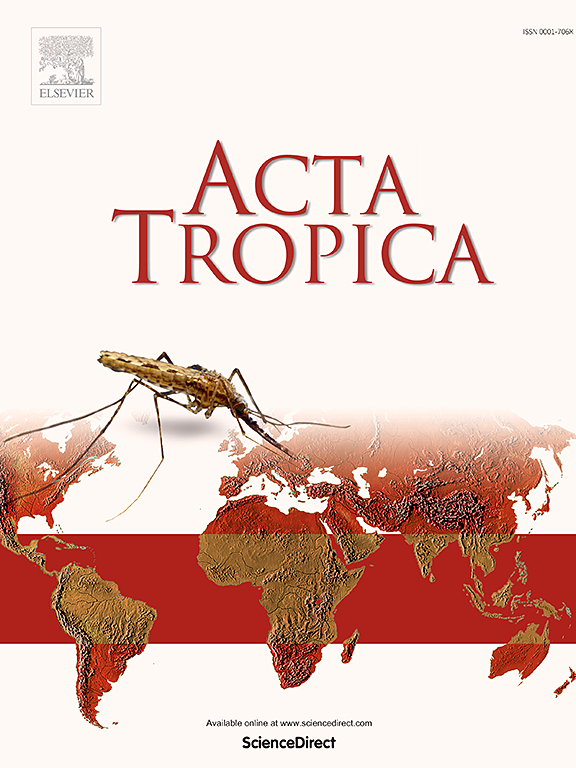Insights into spatio-temporal dynamics of Anopheles vectors while approaching malaria elimination along the Thailand-Cambodia border
IF 2.1
3区 医学
Q2 PARASITOLOGY
引用次数: 0
Abstract
The international borders of Thailand are well recognized as areas with high malaria transmission risk. Although Sisaket Province, bordering Cambodia, is recognized as a malaria-prone area, major progress towards malaria elimination has been made. In fact, this province was ranked as having high malaria incidence in Thailand decades ago, increasing its potential for malaria re-establishment. To devise a re-establishment strategy, this work investigated the spatio-temporal dynamics of Anopheles and examined the malariogenic potential of villages in Sisaket Province. Human landing catches (HLCs) were recorded to collect adult mosquitoes from village and rubber-forest ecotypes between 18.00 and 06.00 h. The collection was conducted for two years based on four consecutive nights per season in the rainy, cool-dry, and hot-dry seasons during July 2022–March 2024, for a total of 24 nights. Based on the results, Anopheles dirus s.s. was the primary malaria vector and predominant in the rubber-forest areas, where positive larval habitats were found. Its biting peaks were observed between 21.00 and 22.00 h across seasons and years. The abundance of An. dirus was correlated positively with the amount of rainfall at two months (R = 0.89) and three months (R = 0.95) after the rainfall. Therefore, public health interventions to prevent outdoor biting should target rubber tappers and forest-goers two–three months after the rainy season. In addition, risk assessment of malaria re-establishment suggested a high potential based on the malariogenic potential scores. Thus, ongoing action is important to control any re-establishment to achieve sustainable malaria elimination in Sisaket Province.

求助全文
约1分钟内获得全文
求助全文
来源期刊

Acta tropica
医学-寄生虫学
CiteScore
5.40
自引率
11.10%
发文量
383
审稿时长
37 days
期刊介绍:
Acta Tropica, is an international journal on infectious diseases that covers public health sciences and biomedical research with particular emphasis on topics relevant to human and animal health in the tropics and the subtropics.
 求助内容:
求助内容: 应助结果提醒方式:
应助结果提醒方式:


